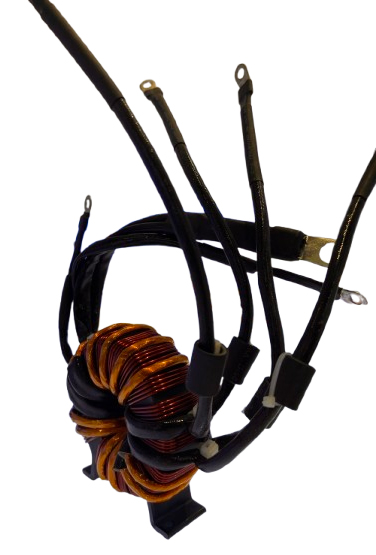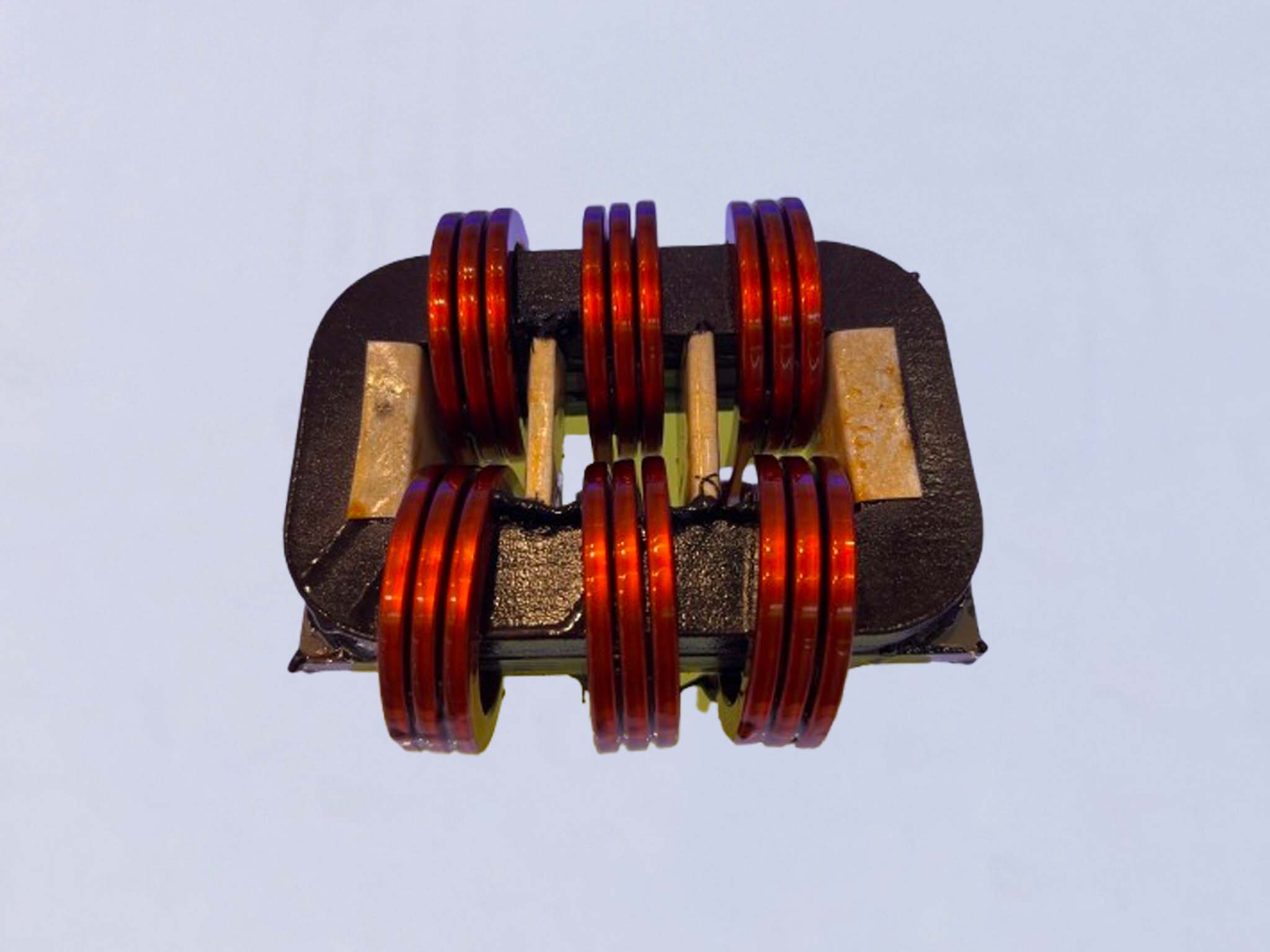As green energy rises and smart power systems become more widespread, the demand for high-efficiency, low-cost inductors in the power electronics industry is growing rapidly. Whether in photovoltaic inverters, UPS power supplies, air conditioning, elevators, or rail transportation, the efficiency and electromagnetic compatibility (EMC) of inductors have become key factors in improving device performance and extending service life. In this article, we will explore the latest inductor design technologies and how these innovations are creating tremendous value across various industries.

1. High Current EMC Common Mode Chokes: Exceptional Performance Across Multiple Applications
In high-current fields, especially in photovoltaic inverters, UPS power supplies, air conditioners, and rail transportation, the performance requirements for inductors are increasingly demanding. The latest high-current EMC common mode chokes use advanced hybrid and edge technologies to effectively solve electromagnetic interference (EMI) and heat dissipation issues caused by high current density.
Innovative Technologies:
- High Current Density & Efficient Heat Dissipation: Utilizing graphene heat dissipation and liquid cooling technologies, these inductors enhance thermal management, increasing stability and prolonged operation under high-current conditions.
- Magnetic Material Innovation: A combination of ferrite and rare-earth materials improves electromagnetic compatibility, reduces core loss, and enhances stability.
- Smart Sensing Technology: The integration of adaptive regulation technology allows the inductor to automatically adjust its operation based on current and temperature changes, improving efficiency and safety.
Application Cases:
- Photovoltaic Inverters: The new common mode chokes help photovoltaic inverters maintain stability under fluctuating power and EMI conditions, increasing system reliability and energy conversion efficiency, while reducing maintenance costs.
- UPS Power Supplies: High-efficiency EMC common mode chokes effectively reduce electromagnetic interference in UPS systems, ensuring stable and efficient power system operation.
2. CCM PFC Chokes: Compact Design with Exceptional EMI Characteristics
Power factor correction (PFC) circuits are critical for modern power electronics. The latest CCM PFC chokes not only optimize high-order harmonic suppression but also tackle electromagnetic interference in devices such as small UPS systems and inverter air conditioners.
Innovative Technologies:
- Advanced Harmonic Suppression: Combining digital control and wide bandgap semiconductor technologies (e.g., SiC, GaN), PFC circuits remain stable under high-frequency conditions, further improving power system efficiency.
- Smaller & More Efficient: The use of nano-crystalline magnetic materials makes the chokes smaller and more powerful, with outstanding performance, particularly under high-load conditions.
Application Cases:
- Smart Grids: PFC chokes enhance power factor in smart grid devices, optimizing power system efficiency, especially in high-frequency operations.
- Inverter Air Conditioners: PFC chokes improve the efficiency of inverter air conditioner power supplies, reducing energy consumption and operating costs.

3. Low-Cost and High-Efficiency Inductor Design Technologies: Integration of Smart and Material Technologies
The latest generation of inductors not only offers higher efficiency, particularly under light load conditions, but their costs are also effectively controlled. Thanks to the integration of artificial intelligence (AI) and machine learning, designers can automatically optimize inductor performance and costs during the design phase.
Innovative Technologies:
- AI-Driven Design Optimization: AI allows real-time optimization of inductor designs based on load conditions, automatically adjusting parameters to improve efficiency and reduce costs.
- Advanced Material Technologies: The use of 3D printing and variable inductors makes the design more flexible, enabling the inductor to adjust to different load conditions, optimizing efficiency.
Application Cases:
- Electric Vehicles: AI-driven design and 3D printing technologies ensure that low-cost, high-efficiency inductors meet the power management needs of electric vehicle battery management systems (BMS) while extending battery life.
- Renewable Energy: In wind and solar power systems, optimized inductor designs help improve energy conversion efficiency, driving the widespread use of green energy.
4. Integrated Magnetic Technology: Achieving Efficient, Low-Cost Designs
The latest generation of inductors uses integrated magnetic circuit technology to optimize core loss and volume, while magnetic flux stacking/cancellation techniques further improve overall efficiency and reduce costs.
Innovative Technologies:
- Integrated Magnetic Circuits: By integrating multiple magnetic components into a single module, it can address multiple electromagnetic issues simultaneously, reducing design complexity and improving system efficiency and reliability.
- Efficient Magnetic Flux Management: The use of superconducting materials optimizes magnetic field distribution, reducing core loss and making inductors more compact.
- Low-Temperature Co-Fired Ceramic (LTCC) Technology: This allows inductors to withstand high temperatures and harsh environments, increasing product lifespan.
Application Cases:
- Wireless Charging Technology: Integrated magnetic circuits help wireless charging devices achieve smaller sizes and higher efficiency, meeting the needs of smartphones, smart homes, and other products.
- Smart Power Devices: Magnetic integration designs enable power devices to maintain high efficiency while being compact, driving the rapid development of emerging technologies such as smart homes and wearable devices.

Conclusion
With the introduction of these innovative design technologies, inductors have shown significant improvements in high-current applications, power factor correction, low-cost designs, and efficient magnetic management. These technologies not only meet the growing demands of modern power electronics systems but also push forward the future of green energy and smart power systems.
Want to learn more about application cases or collaboration opportunities? Contact us today and explore the endless possibilities of smart power systems!

